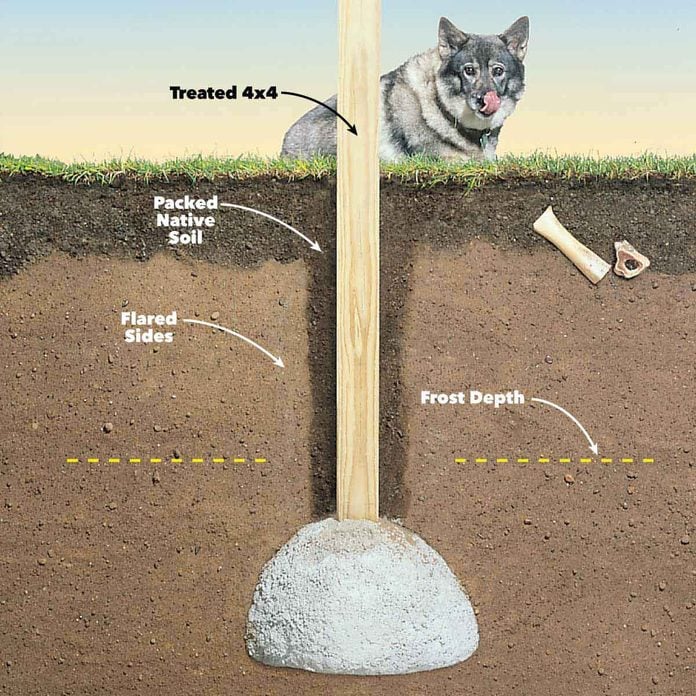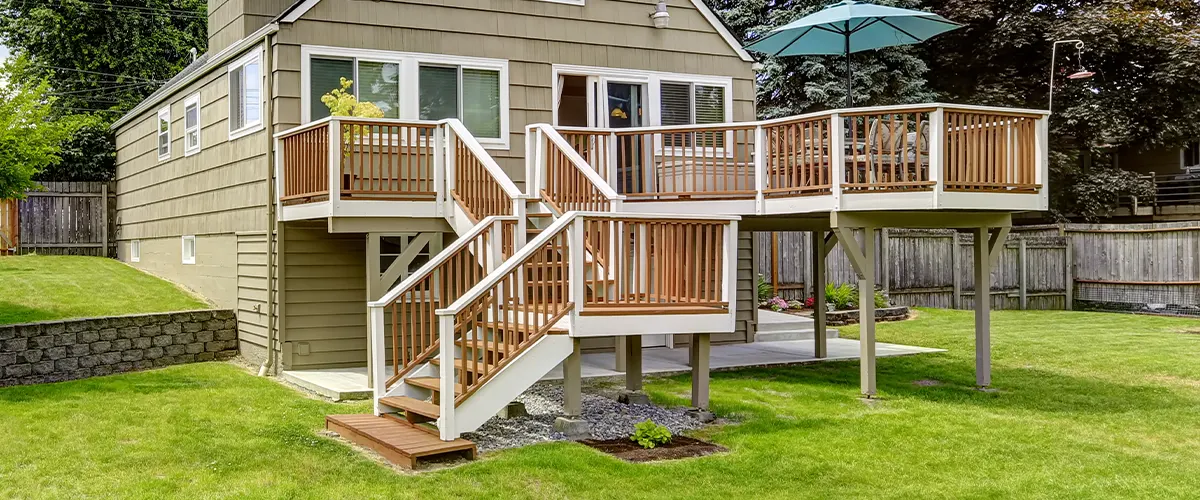Structural Integrity Matters: Choosing the Right Deck Footings for Your Outdoor Job
Selecting the Right Deck Footings for Security and Sturdiness
When it involves developing a deck, among the most crucial choices you will certainly make is selecting the appropriate footings for stability and sturdiness. The longevity and safety of your deck depend greatly on the kind of grounds you select, as they supply the vital support and stability to hold up against the test of time. With a myriad of options available, it can be frustrating to identify which footings are best fit for your certain demands. In this conversation, we will certainly check out the different kinds of deck footings, think about the important elements to weigh when choosing, and explore the pros and disadvantages of various options. By the end, you will have a more clear understanding of the options available and be much better furnished to make an informed choice for your deck task.
Sorts Of Deck Grounds
There are several kinds of deck grounds that can be utilized, each offering one-of-a-kind advantages and factors to consider. One typical kind of footing is the concrete pier ground. These grounds include a cylindrical hole filled up with concrete, which gives a strong foundation for the deck posts. Concrete pier grounds are reasonably simple to set up and supply exceptional stability, making them a preferred option for many deck jobs.
Another sort of footing is the helical heap footing. Helical heaps are steel shafts with helical plates connected to them. These footings are installed by screwing them right into the ground, which produces a safe and secure foundation for the deck. Helical pile footings are excellent for locations with challenging dirt problems, as they can be set up in almost any type of sort of soil. If needed., they additionally allow for simple modification and progressing of the deck.
Additionally, some home builders go with precast concrete grounds. These footings are constructed from sturdy concrete and be available in various forms and dimensions to fit various deck layouts. Precast concrete grounds are convenient to set up and offer a steady base for the deck framework.
Ultimately, another option is the post-in-anchor footing system. This sort of footing involves driving a metal support into the ground and affixing it to the deck message. It supplies versatility in terms of positioning the deck blog posts and is appropriate for decks with light-weight structures.
When picking the right kind of deck footing, it is vital to think about factors such as dirt problems, deck load, and neighborhood building codes (Deck Footings). Consulting with a specialist specialist or architectural designer can help make sure the ideal footing is picked for a stable and risk-free deck
Variables to Think About When Picking Footings
When picking the appropriate footings for a deck, it is vital to very carefully consider various variables such as dirt conditions, deck lots, and adherence to regional structure codes. These aspects play a significant function in making certain the stability and longevity of the deck structure.
Among the primary elements to think about is the soil conditions. The sort of soil on which the deck will be built figures out the sort of grounds called for. Decks built on loose or sandy soils might need deeper footings to offer sufficient support and prevent settling. On the other hand, decks constructed on clay or large dirts might require footings that can suit the dirt's propensity to broaden and contract.
One more important factor is the deck lots. The weight of the deck, consisting of the products utilized and any type of potential live lots such as furniture or gatherings, have to be taken into consideration when choosing grounds. The grounds should be designed to birth the weight of the deck and distribute it equally to stop any architectural concerns or failures.
Last but not least, adherence to regional building ordinance is extremely important. Building codes vary from area to region, and it is necessary to abide by the particular needs established by the regional authorities. Deck Footings. These codes guarantee that the deck is constructed safely and fulfills the required standards for structural integrity and load-bearing capability
Concrete Grounds: Pros and Cons

When made use of as the foundation for a deck,Concrete footings supply several benefits and drawbacks. On the silver lining, concrete footings supply excellent stability and toughness. Concrete is a rigid and strong material that can support hefty tons blog and hold up against various weather. It likewise has a lengthy life-span, making it a reliable choice for long-lasting use.
An additional benefit of concrete grounds is their convenience. They can be poured right into various sizes and shapes to fit various deck styles and like this setups. Concrete footings can be customized to fit the certain requirements and demands of the deck framework.
Nevertheless, there are likewise some drawbacks to using concrete footings. One major drawback is the cost and labor included in their setup. Concrete footings need excavation and commonly require the aid of hefty machinery. This can enhance the general cost of the deck project and might call for specialist help.

Helical Piers Vs. Sonotubes: Which Is Better?
In thinking about the foundation options for a deck, the comparison in between helical piers and sonotubes is crucial in determining the superior selection. They are turned into the ground using hydraulic equipment, giving a steady and resilient structure for the deck.
The helical plates on the piers create a solid hold with the soil, stopping any type of motion or moving of the deck. Sonotubes, on the other hand, depend solely on the concrete filling up for stability, which might not supply the very same degree of toughness and resistance.
In regards to installment, helical piers are reasonably less complicated and faster to mount compared to sonotubes. The hydraulic equipment utilized to twist the piers right into the ground makes certain a fast and effective procedure. Sonotubes, on the other hand, require digging holes and pouring concrete, which can be labor-intensive and time-consuming.
Additionally, helical piers are a more functional choice. If required, they can be made use of in numerous dirt problems and can be adjusted or strengthened. Sonotubes, on the other hand, may call for extra support, such as rebar, in specific dirt conditions or locations with high load requirements.
Selecting the Right Footings for Your Deck's Measurements
For optimum architectural honesty, it is important to thoroughly select the appropriate grounds that align with the dimensions of your deck. The dimensions of your deck, including its width, length, and height, play a considerable role in identifying the type and dimension of footings required.
When selecting grounds for your deck, it is necessary to consider the load-bearing capability of the dirt. The weight of the deck, incorporated with the weight of any furniture or people on it, applies a considerable pressure on the footings (Deck Footings). It is vital to choose grounds that can adequately support this weight without sinking or changing over time.
The dimension and shape of the grounds must also be thought about. Larger decks with higher measurements need bigger grounds to supply enough stability and support. The form of the footings, whether they are square or round, depends upon the layout and design of the deck. Additionally, the deepness at which the grounds are set up ought to be identified based on the frost line in your area to stop any heaving or moving as a result of freezing temperatures.
Verdict
In conclusion, selecting the right deck grounds is essential for guaranteeing stability and longevity. Elements such as the kind of grounds, the deck's dimensions, and the pros and cons of various alternatives should be taken into consideration. Concrete footings supply toughness and durability, yet might be much more taxing and expensive to mount. Helical piers and sonotubes have their own advantages and drawbacks. Inevitably, choosing the suitable footings for your deck's details requirements is important for a effective and lasting framework.
These footings consist of a cylindrical opening filled up with concrete, which gives a strong structure for the deck messages. Concrete pier footings are fairly very easy to set up and provide superb security, making them a prominent choice for several deck projects.
Precast concrete footings are practical to set up and supply a steady base for the deck structure.
It provides versatility in terms of positioning the deck articles and is appropriate for decks with lightweight structures.
Concrete footings offer several benefits and disadvantages when used as the structure for a deck.